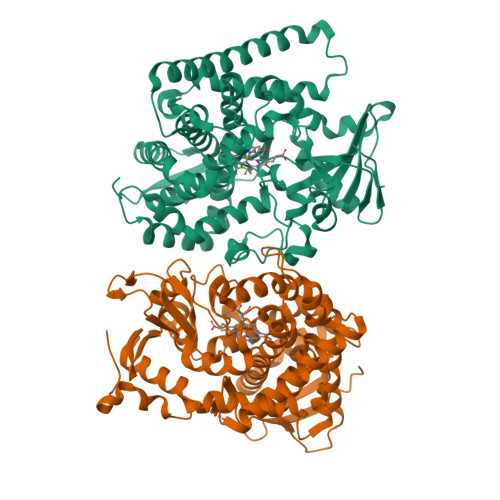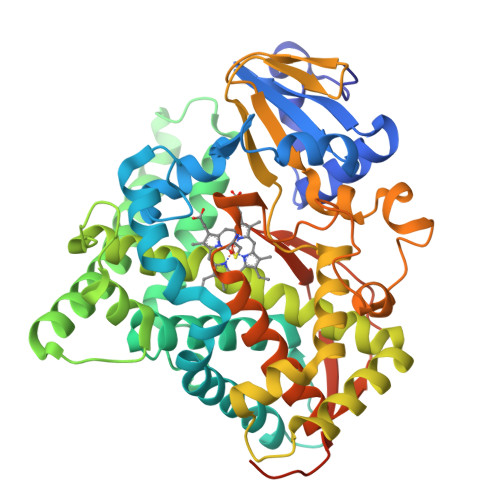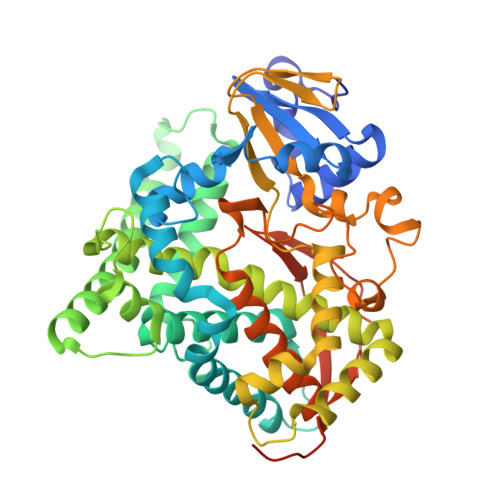Structural basis for the properties of two single-site proline mutants of CYP102A1 (P450BM3)
Whitehouse, C.J.C., Yang, W., Yorke, J.A., Rowlatt, B.C., Strong, A.J., Blanford, C.F., Bell, S.G., Bartlam, M., Wong, L.L., Rao, Z.(2010) Chembiochem 11: 2549-2556
- PubMed: 21110374
- DOI: https://doi.org/10.1002/cbic.201000421
- Primary Citation of Related Structures:
3M4V - PubMed Abstract:
The crystal structures of the haem domains of Ala330Pro and Ile401Pro, two single-site proline variants of CYP102A1 (P450(BM3)) from Bacillus megaterium, have been solved. In the A330P structure, the active site is constricted by the relocation of the Pro329 side chain into the substrate access channel, providing a basis for the distinctive C-H bond oxidation profiles given by the variant and the enhanced activity with small molecules. I401P, which is exceptionally active towards non-natural substrates, displays a number of structural similarities to substrate-bound forms of the wild-type enzyme, notably an off-axial water ligand, a drop in the proximal loop, and the positioning of two I-helix residues, Gly265 and His266, the reorientation of which prevents the formation of several intrahelical hydrogen bonds. Second-generation I401P variants gave high in vitro oxidation rates with non-natural substrates as varied as fluorene and propane, towards which the wild-type enzyme is essentially inactive. The substrate-free I401P haem domain had a reduction potential slightly more oxidising than the palmitate-bound wild-type haem domain, and a first electron transfer rate that was about 10 % faster. The electronic properties of A330P were, by contrast, similar to those of the substrate-free wild-type enzyme.
Organizational Affiliation:
Department of Chemistry, University of Oxford, Inorganic Chemistry Laboratory, South Parks Road, Oxford OX1 3QR, UK.




















